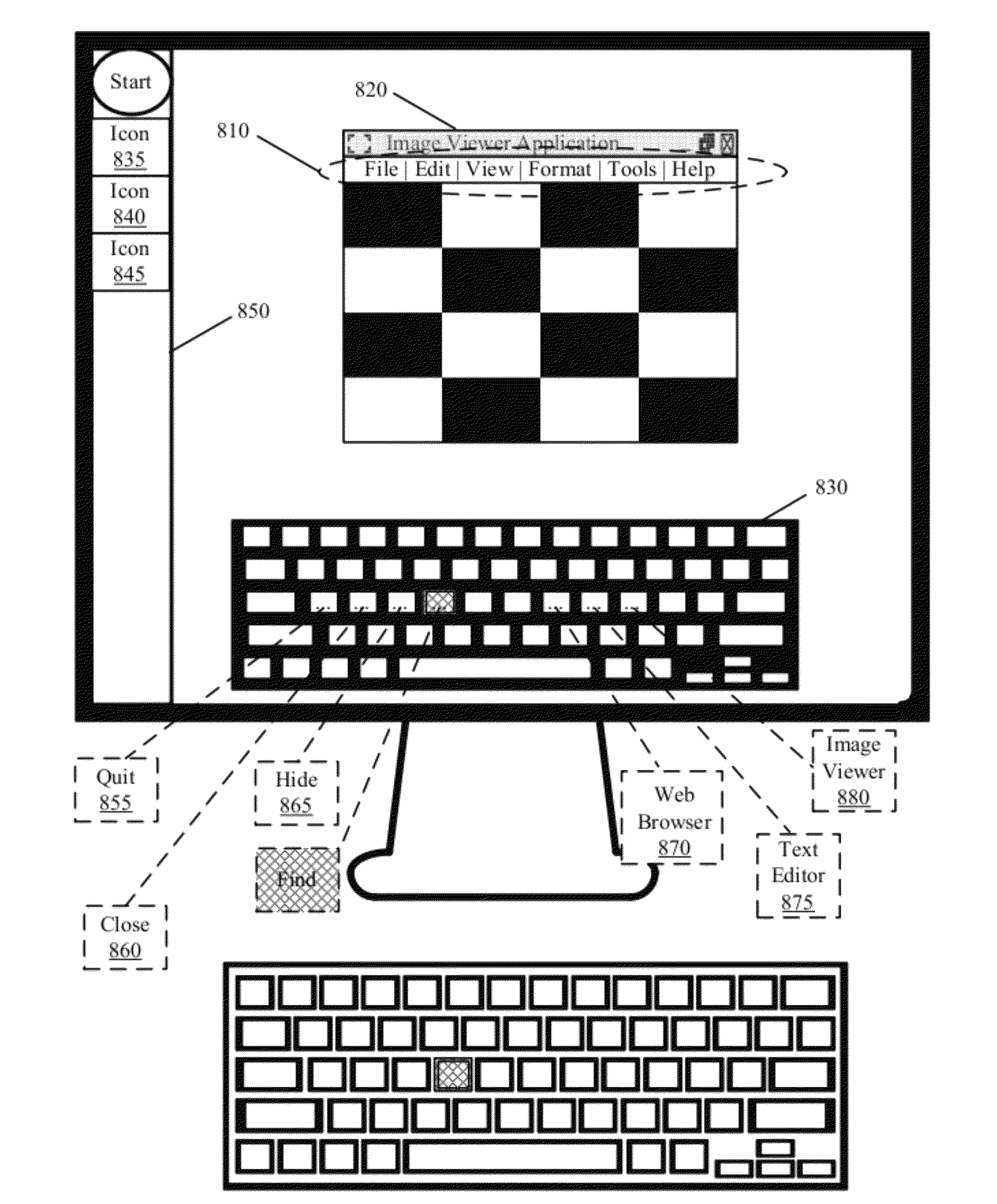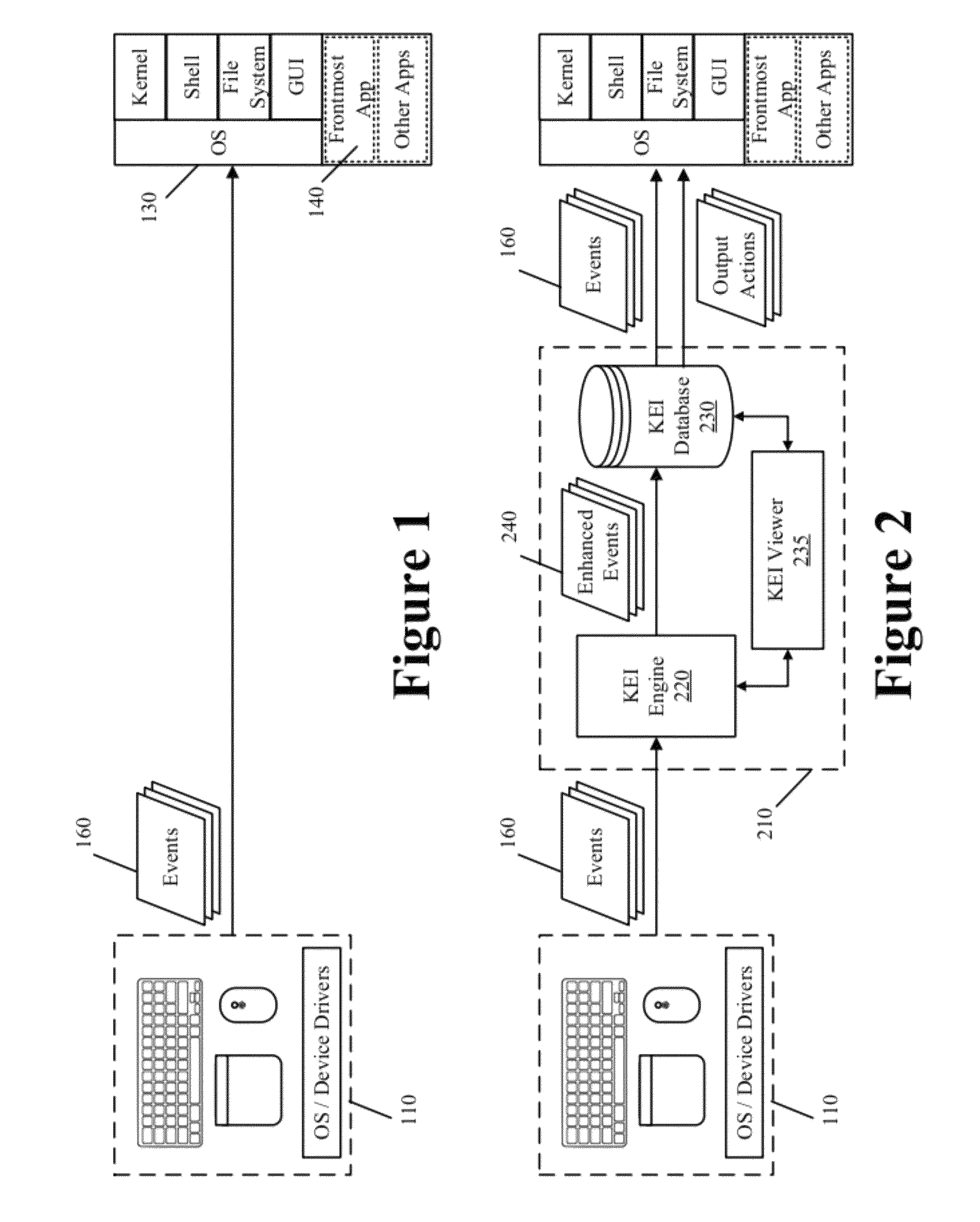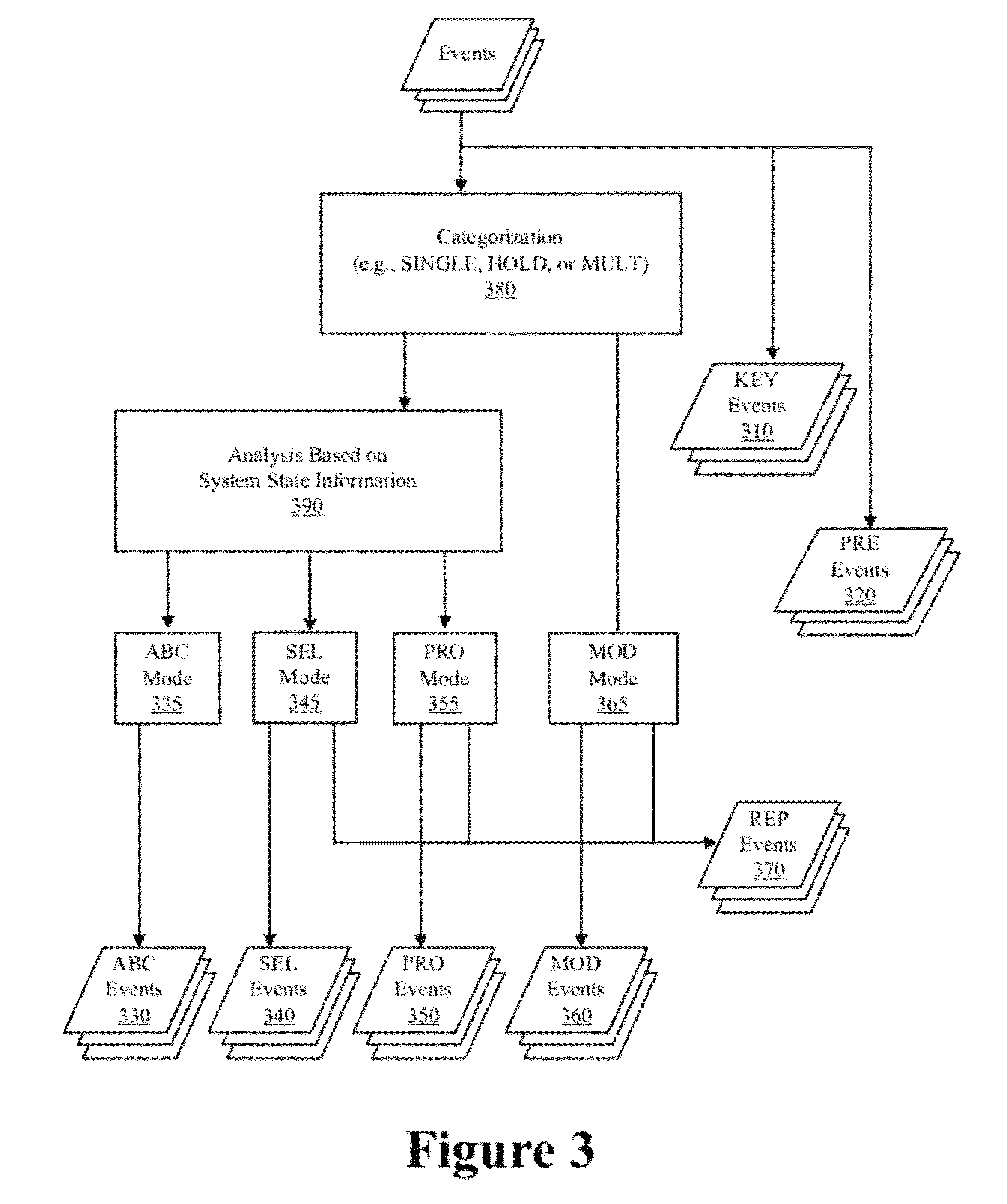Input device enhanced interface
a technology of input device and enhanced interface, which is applied in the direction of mechanical pattern conversion, instruments, cathode-ray tube indicators, etc., can solve the problems of limiting the number of possible shortcuts, and neither the mouse nor the touchscreen interface can leverage muscle memory for repeated invocation of output actions, etc., to facilitate productive and enjoyable computing device interactions, increase efficiency and expressivity in use, and more control over software applications
- Summary
- Abstract
- Description
- Claims
- Application Information
AI Technical Summary
Benefits of technology
Problems solved by technology
Method used
Image
Examples
Embodiment Construction
[0104]In the following detailed description, numerous details, examples, and embodiments of the Keyboard Enhanced Interface (KEI) system are set forth and described. As one skilled in the art would understand in light of the present description, the KEI system is not limited to the embodiments set forth, and the KEI system may be practiced without some of the specific details and examples discussed, or in different permutations. Also, reference is made to accompanying figures, which illustrate specific embodiments in which the invention can be practiced. It is to be understood that other embodiments can be used and structural changes can be made without departing from the scope of the embodiments described in this invention.
[0105]The term “keyboard” as used in the description, figures, and embodiments presented herein includes any key-based input device. Some such key-based input devices include a keyboard apparatus with a plurality of keys and virtual touchscreen keyboards with any...
PUM
 Login to View More
Login to View More Abstract
Description
Claims
Application Information
 Login to View More
Login to View More - R&D
- Intellectual Property
- Life Sciences
- Materials
- Tech Scout
- Unparalleled Data Quality
- Higher Quality Content
- 60% Fewer Hallucinations
Browse by: Latest US Patents, China's latest patents, Technical Efficacy Thesaurus, Application Domain, Technology Topic, Popular Technical Reports.
© 2025 PatSnap. All rights reserved.Legal|Privacy policy|Modern Slavery Act Transparency Statement|Sitemap|About US| Contact US: help@patsnap.com



